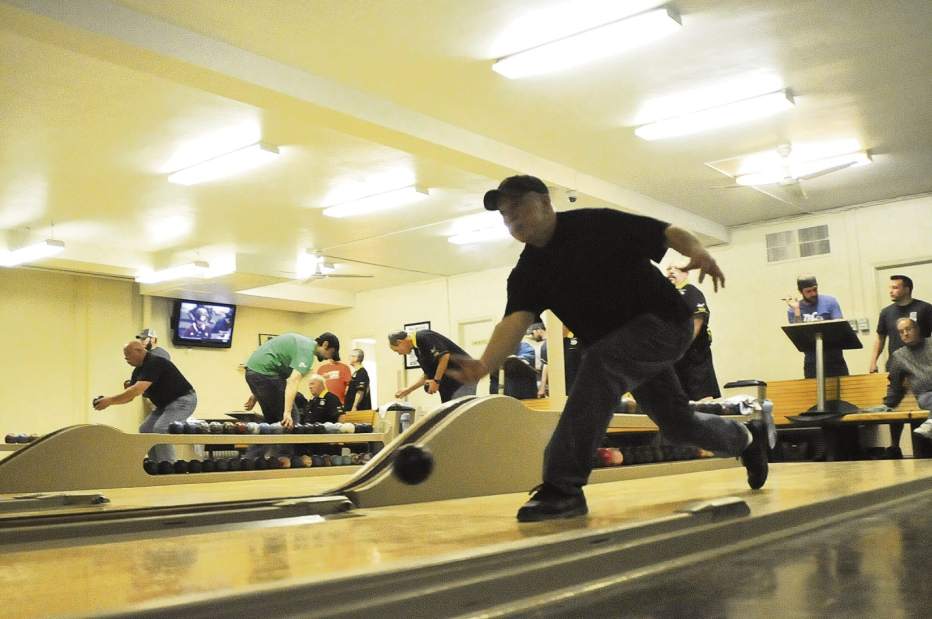Duckpin Bowling still reigns supreme in Etna
At the DOH Club of Etna, duckpin bowling is a nostalgia-based pastime.
Duckpin bowling uses a bocce ball-sized ball with no finger holes that weighs less than four pounds that are rolled at shorter, fatter pins than traditional 10-pin bowling. In 1905, William Wuerthele, of Pittsburgh, developed rubber band duckpin bowling, which relies upon a thick band around the pin to increase scoring. The same pin type remains today at the Der Deutsche Orden der Harugari, which translates to the German Order of Harugari.
Nearly half of the Wednesday men's league members had duckpin bowled together at the Etna Elks prior to the lodge's 2011 closure, according to Alan Alt, of Ross.
The lanes lack automated machines, so pin boys and girls work behind the scenes, dodging flying pins and manually resetting them, usually working two lanes at a time.
“It's fun setting pins,” said Ashley Taylor of Millvale. “So it's good to be able to run back there and I guess jump around and dodge the pins.”
Rick Snyder, 44, reminisced about his first job setting pins, a shared history among many in the league.
“The biggest thing was making sure that you cleared the alleys. When somebody doesn't have a strike or something like that, you have to clear that alley off and hop over to the other alley and make sure that it's cleared off.”
Dick Kress' grandfather ran Eidenmillers' Bowling Alleys in Bauerstown “near the streetcar loop” from the 1930s through the 1980s.
“I came home from the service, since I left Vietnam. And he'd call me up to say, ‘Dick, come on down. I need help to set up. The pin boys didn't show.' He's jumping two alleys, and I'm jumping two alleys. I'm in my late 20s; he's in his mid-70s.”
Snyder set pins for his grandmother and aunt, who duckpin bowled until they were both 75 at St. Anthony lyceum, now Holy Spirit Parish in Millvale.
“That's all gone now. I mean, you can't even get in the building. The lanes are gone. It's a dying thing,” said Bill Dlugos, 52, of the lanes where he bowled his historic 289 record — he still carries the score sheet with him as a reminder 30 years later.
“It's not as easy as you think. That's for damn sure. Anybody that wants to try it is more than welcome to try it,” said Alt.
Matt Thompson, 31, of Etna, said a great, average score for 10 pins is 250, and one for duckpins is 130.
“It's 10 times harder. It's a very aggravating game,” said Mike Schindler, club vice president and alley manager.
Every February, the men compete for the Ducky Cup. The winners get their league and individual names engraved on the trophy adorned with multiple ducks.
Duckpin bowling does not seem to be losing its popularity at the club. There are leagues on week nights, with one night for women and one for couples. There is a waiting list to join the teams.
The bowling season will end in April and reopen in September because the basement alleys are not air conditioned.
Would the club ever consider converting the lanes to 10-pins?
“That would never happen. To people here it's like a religion,” Schindler said.
Erica Cebzanov is a Tribune-Review contributor.




